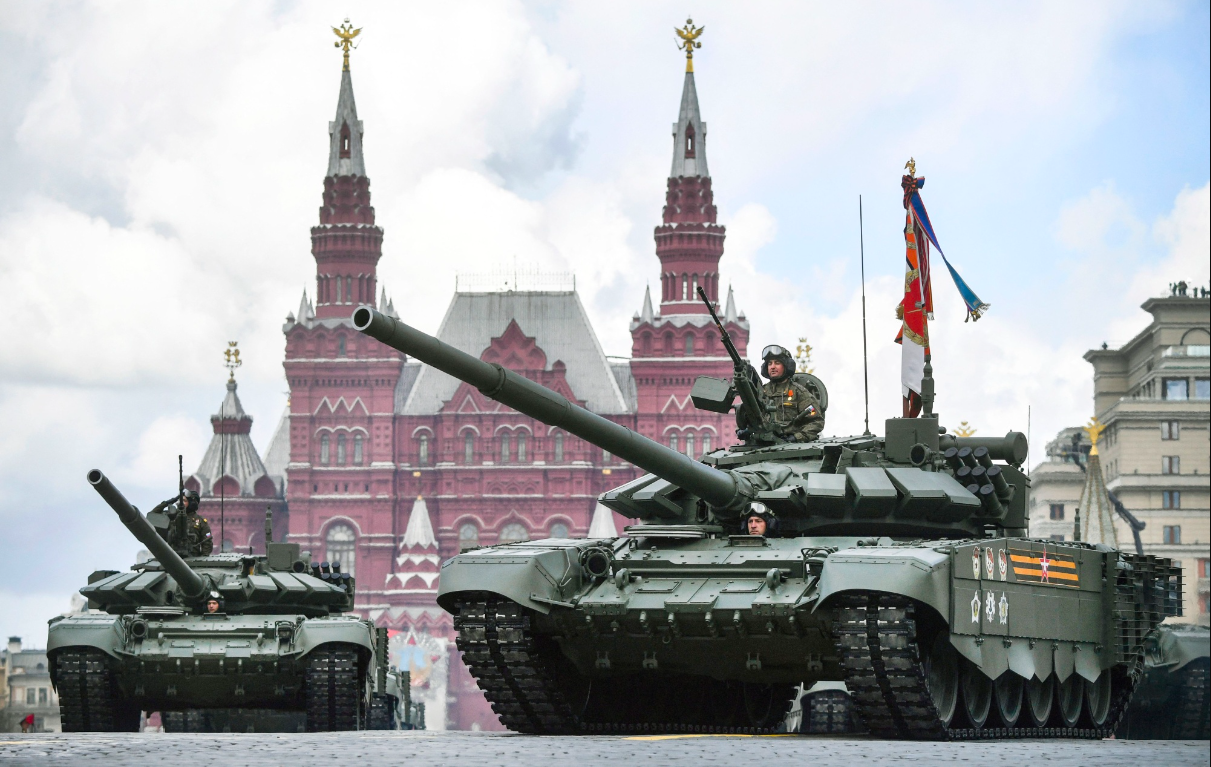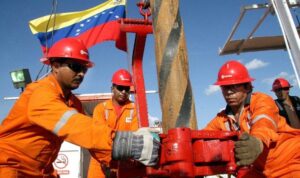
Published 02/21/2024 16:42 | Edited 02/23/2024 11:21
This Thursday (8), the Russian Federal Statistical Service (Rosstat) revealed that Russia’s Gross Domestic Product (GDP) grew 3.6% in 2023, a rate almost identical to that estimated by the country’s Ministry of Economic Development. The numbers confirm a robust recovery of the country’s economy, after two years of embarrassing wrong predictions about the Russian economy. Large Western banks predicted a 9% drop in GDP.
“The volume of Russia’s GDP in 2023, according to the first estimate, amounted to 171.041 trillion rubles [equivalente a cerca de R$ 9,32 trilhões] in current prices. The GDP physical volume index in relation to 2022 was 103.6%. The GDP deflator index in 2023 in relation to 2022 prices was 106.3%”, reported Rosstat. In the euro zone, growth should have been 0.6%. In Brazil, 3%. In the USA, it was 2.5%.
It is notable that this growth occurs despite the unprecedented sanctions imposed by Western countries against Russia from 2022, which were added to those applied previously. By the year 2022, the Russian economy had contracted by 1.9%, a result of Western sanctions in response to the Russian military operation in Ukraine.
The European Union approved this Wednesday (21) its 13th package of sanctions against Russia, “one of the broadest approved by the EU”. The new package will target almost 200 entities and individuals added to the sanctioned list, but there will be no new sectoral measures.
“They predicted decline, failure, collapse — that we would retreat, give up or disintegrate. It makes you want to show [a eles] a well-known gesture, but I won’t do that, there are many ladies here,” Putin said in Tula, the capital of the arms industry, to applause. “They will not succeed! Our economy is growing, unlike theirs.”
The Russian economy showed resilience in absorbing the initial effects of the imposed restrictions, and demonstrated that it is capable of sustaining the prolongation of the war, in addition to the detachment from the West. The defense budget was 2.7% of GDP in 2021; in 2024, it should reach 6% of GDP (for total public expenditure of around 36% of GDP).
Maksim Reshetnikov, Russia’s Minister of Economic Development, linked economic growth to consumer demand and investment. “The growth in consumer activity was provided by citizens’ income, which last year increased by 4.6% in real terms. Firstly, due to the increase in employees’ remuneration, but an important factor was also the growth in business income, by almost a quarter in real terms”, he detailed.
Dodging sanctions
The good results for 2023 reflect Russia’s ability to partially circumvent sanctions, avoiding some of them. Furthermore, factors such as favorable energy prices, flexible credit conditions and robust domestic demand boosted economic activity.
One of the world’s largest oil and gas producers, it faced a significant reduction in revenue from these resources in 2023, as recently reported. While Russian barrels are sold at a lower price than before the war, they are still above the ceiling imposed by the West.
In the five years before the start of the epidemic (2015-2019), oil and gas revenue represented 40.8% of total government budget revenue. In 2022, the first year of the war, this number increased to 41.6% of the total, a result of the sanctions imposed and the increase in the price of a barrel caused by the conflict. However, in 2023, revenue fell to 30.3%, the lowest since 2006, with the exception of 2020, marked by the COVID-19 epidemic. This drop was partly due to the decrease in the price of the commodity.
“We actively implement import substitution programs to support demand. As a result, a significant contribution to economic growth was made by the industrial sector, oriented towards domestic demand,” Reshetnikov added.
Since the Soviet period, Russia has specialized in strategies to mitigate the initial impact of sanctions at the start of the war, when Western countries froze $300 billion of Russia’s sovereign reserves and the Kremlin imposed currency controls to stop a flight of capital and a run on the banks.
Economy in peace
When discussing economic problems, experts are not speaking in terms different from those of other countries that are not at war. All indexes are similar or even better. In the World Bank’s classification of GDP by purchasing power parity, Russia slightly surpasses Germany.
The public deficit has grown, but Russia has historically maintained fiscal discipline. The country’s public debt is relatively small, representing around 20% of the Gross Domestic Product (GDP).
Despite the increase in federal spending, the public deficit was kept under control, representing 1.9% of GDP, according to the Ministry of Finance. Furthermore, Russia has managed to reduce its dependence on revenues from the sale of hydrocarbons, which in 2023 accounted for about a third of the state budget, compared to almost half previously.
The defense priority sector played a crucial role in the economic recovery, stimulating domestic demand. To attract workers in sectors affected by shortages, there was a significant increase in real wages. The average salary grows more than inflation in a country where purchasing power is 80% greater than Brazil’s and inequality is much lower.
Defense spending includes not only equipment production, but also war-related social payments for those fighting in Ukraine and their families, as well as some spending in the occupied territories. President Vladimir Putin highlighted that more than half a million Russians have joined the defense industry since 2022—to work the round-the-clock shifts necessary to achieve defense production targets.
The thrust of military-related investments is expected to increase further in 2024, with the government planning a nearly 70% increase in defense spending, representing about 30% of federal expenditures and 6% of GDP.
Meanwhile, Western countries continue to look for ways to tighten sanctions against the Russian economy and make it more difficult to manufacture ammunition and weapons. However, there are internal disagreements on how to proceed, both in the United States and the European Union.
Post-war risks
As Russia’s economic reality unfolds, a complex and potentially risky scenario emerges, marked by a substantial increase in military spending and continued dependence on energy revenues despite sanctions.
Russia allocated a considerable fraction of its national budget to the war effort, with spending expected to run into trillions of rubles. This increase in military spending, described by experts as a “stunning break” in the country’s post-communist economic trajectory. Such an approach, although it has kept the economy moving, carries with it significant risks of overheating and structural imbalances.
Despite a reduction in energy revenues compared to previous years, Russia still relies heavily on its oil and gas exports. This economic model, intensified by the context of war, has generated substantial revenues, but also exposes the country to vulnerabilities, especially in the face of a changing global market and persistent sanctions.
As Russian military production scales to meet the demands of war, civilian industry faces growing challenges, including labor shortages and inflationary pressures. The mobilization of hundreds of thousands of men into the army and the flight of talent from the country exacerbate these problems, creating a scenario where current economic growth may be unsustainable in the long term.
Analysts and economists warn of the dangers of an economy overly dependent on military spending and energy revenues. This model, although effective in sustaining growth in the short term, can lead to economic stagnation or even a deep post-war crisis. The “all for victory” strategy can, paradoxically, set the stage for significant economic challenges, especially if the war drags on.
The Russian economy, although seemingly resilient in the face of sanctions and conflict, faces an uncertain future. The risks of dependence on military production and energy revenues, combined with structural challenges and inflationary pressures, could undermine the fundamentals of the economy. As Russia moves deeper into a model of military Keynesianism, the long-term economic, social and political costs could be significant, calling into question the sustainability of current growth and putting the country’s future economic stability at risk.
Source: vermelho.org.br

